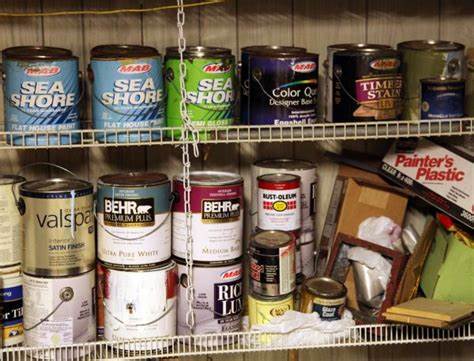When it comes to painting your home, one of the things you’re left with is excess paint. Instead of tossing it out, you can store it for future touch-ups or even use it for another project. However, storing leftover paint isn’t as simple as putting it in the garage and forgetting about it. In this article, we’ll discuss the best ways to store leftover paint so that it remains fresh and ready to use for years to come according to local Painters in Cinnaminson.
Prepare the Paint
Before storing your leftover paint, it’s important to prepare it properly. First, remove any excess paint from the rim of the can to ensure an airtight seal. Then, cover the opening with plastic wrap and tap the lid into place with a rubber mallet. This will help create a tight seal and prevent air from entering the can, which can cause the paint to dry out or thicken.
Choose the Right Container
The container you choose for storing your leftover paint is crucial. Airtight containers such as glass jars or metal cans with a tight-fitting lid work well for storing paint. Avoid using plastic containers, as they are porous and can allow air to seep in. Additionally, plastic containers can break down over time, which can cause the paint to leak or become contaminated.
Label the Container
To avoid confusion later on, it’s important to label the container with the type of paint, color, and date it was stored. This will help you quickly identify the paint you need for touch-ups or future projects.
Store in a Cool, Dry Place
Proper storage of leftover paint is crucial to its longevity. The best place to store paint is in a cool, dry place, such as a basement or garage. Avoid storing paint in areas that are subject to extreme temperatures or humidity, such as attics or bathrooms. The ideal temperature range for storing paint is between 50-80°F (10-26°C).
Regularly Inspect and Stir
Even with proper storage, it’s important to regularly inspect and stir your leftover paint. Over time, paint can settle and separate, which can affect its quality. To prevent this, inspect the paint every six months and stir it thoroughly to ensure it’s still in good condition.
By following these tips, you can extend the life of your leftover paint and ensure it’s ready to use whenever you need it. Proper storage of leftover paint is not only good for your wallet, but it’s also good for the environment.

